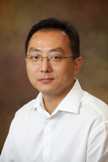Professor Shikha Nangia Named as the Milton and Ann Stevenson Endowed Professor of Biomedical and Chemical Engineering
The College of Engineering and Computer Science (ECS) has announced the appointment of Shikha Nangia as the Milton and Ann Stevenson Endowed Professor of Biomedical and Chemical Engineering. Made possible by a gift from the late Milton and Ann Stevenson,…


 PECS invited Ahn to write the article based on a history of expertise in the field. Ahn’s previous research resulted in the development of several types of Power MEMS devices, including a micro heat exchanger, a micro fuel cell and a micro heat engine.
PECS invited Ahn to write the article based on a history of expertise in the field. Ahn’s previous research resulted in the development of several types of Power MEMS devices, including a micro heat exchanger, a micro fuel cell and a micro heat engine.